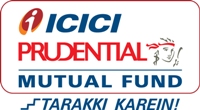This Mutual Fund or That Mutual Fund: An Investors Fix

In this ever expanding Mutual Fund industry, there are new funds offers, existing schemes, existing Asset Management Companies (AMCs) big and small and also AMCs planning to enter the Indian markets that already have global recognition and are trying to make their mark in the Indian market. In short, as an investor you are being presented with too many choices. This choice is proving to be a bane rather than a boon. You may be clear about the asset classes in which to invest but in every asset class there are umpteen funds from various AMCs. For example you wish to invest in Large Cap funds, there are various Large Cap funds of different AMCs and their performances have been consistent. Hence, in this scenario picking a fund could prove to be a challenge. Let us look at some parameters you can use for analyzing funds before making an investment choice.
Investors also tend to get flabbergasted by technical jargon and often prefer to get not invested than clarify the jargons. Hence, for the benefit of the readers we have included some commonly used financial jargons with simplified meaning and examples. Needless to mention, this will facilitate funds selection.
Technical Terms
Standard Deviation
This is used to measure the volatility of a fund over a period of time. Standard Deviation can be used to determine the variation from historical returns. By definition, standard deviation measures the dispersion from the average returns over a defined period.
Example: The Rate of Return of a fund is 20% and the Standard deviation is 5%, then there is a 68% probability its return will range from 15% (20-5) to 25% (20+5), and an 84% probability that its return will range from 10% (20 – 2*5) to 30% (20+2*5)
Sharpe Ratio
This measures the performance of a fund relative to the risk taken by it. It measures the excess return over risk free return products like Government bonds or fixed return instrument and divides it by Standard Deviation to arrive at the Sharpe ratio of the fund. The higher the Sharpe ratio, the better the fund has performed relative to the risk taken by it.
Beta
It measures the funds volatility against the benchmark to which it is being compared. If a fund has Beta 1it means that, other things remaining the same, it will mirror the returns of the benchmark. However for example, if the fund has a Beta 2, it implies that fund it rise by 20% versus the risk free rate for every 10% rise in the benchmark versus the risk free rate and vice versa
Alpha
Every fund has a benchmark against which its performance is measured. A fund is acclaimed to be a good performer if they outdo their respective benchmarks. Alpha is defined as the excess risk adjusted returns over the benchmark performance. For example, if the benchmark return is 10% more than the risk free rate and if the fund has a beta of 2, we would expect the funds return to be 20% more than the risk free rate. However, if the fund’s return is 25% more than the risk free rate then, the Alpha of the fund is 5%.
Expense Ratio
Investors usually pay charges included in investment to cover the expenses like operational and distribution related expenses. The expense ratios are capped at a particular level by SEBI regulations. The lower the Expense ratio, the better is the potential returns from the fund, assuming the gross performance is the same.
The Asset Management Company
There are several AMCs both national and international that have been household names in India for a few decades now. There are many AMCs that are setting foot in India. As an investor you must pick an AMC which is reputed for the right reasons like consistent performance, transparency, compliance to regulations etc. If an AMC is making tall claims of assured returns or making promises that are too good to be true then you need to consider it with a pinch of salt.
Every AMC has a fund manager overseeing the individual funds. Funds generate returns based on the investment philosophy of the fund manager. If you prefer stability in your investments and the fund manager is known for its volatile methods of investments, which may produce soaring highs and stomach churning lows, then you may want to steer clear of such a fund.
While analyzing the AMCs look for the respective costs involved in every fund. If the expenses ratios for equity and debt fund are close to 2.5% and 2.25% respectively, then they are expensive funds and could potentially reduce your returns. Funds with expense ratios up to or less than 1% is an indicator of frugally managed fund. The Asset under Management (AUM) for a particular fund is also an important indicator of the AMC’s and Fund manager’s ability and experience to manage assets. Higher the AUM, lower will be the Expense ratio as the fixed expense will reduce on a per unit basis. While you should definitely watch expense ratios, it should not be the all important factor when selecting mutual funds, especially equity funds. The most important factor for selecting equity funds is the fund manager’s ability to generate high alphas. If a fund manager generates alpha that is a few percentage points higher than its peers, it is outperforming its peers even if its expense ratio is a few basis points higher than the peers. However, for debt funds, expense ratio should be an important consideration, because it can make a significant difference to returns.
The Risk Return Indicators
High returns are a compensation for the risk that an investor takes. Investors are torn between the choices of risk free return products or risk oriented products. Hence, there are certain parameters which measure the fund’s performance against the risk free return products. If the fund has a high Sharpe Ratio, it is indicative of high returns as compared to risk free return products.
In the example below, Fund A is a better fund for investment because it has a high Sharpe ratio and lower standard deviation. It is indicative that, the fund’s returns will deviate only up to 4% from the historical returns. The higher Sharpe Ration indicates its performance despite high risk. It is a stable fund as compared to Fund B which is a very volatile fund as it has an SD of (+/-)8 and a low Sharpe Ratio of only 1.25.
Comparison of Two Funds: Risk Return Indicators

Alpha and Beta are essential risk return indicators. A high Alpha signifies a high performing fund and consistent outdoing of the benchmark. A high beta however is indicative of a volatile fund. Hence, a high Alpha and a moderate beta could make for a stable fund. The fund’s return, alpha (α) and beta (β) are linked by the following formula:-
Fund return = Risk free rate + β * (Benchmark return – risk free rate) + α
Let us understand with the help of an example. Assume Fund A and Fund B are two large cap funds. The benchmark index is Nifty. The risk free rate is 8%. The beta (β) of Fund A is 1.5 and that of Fund B is 2. The alpha (α) of Fund A is 5% and that of Fund B is 2%. What will be the returns of the respective returns if Nifty rises by 15%?
Fund A return = 8% + 1.5 * (15% - 8%) + 5% = 23.5%
Fund B return = 8% + 2 * (15% - 8%) + 2% = 24%
We can see that Fund B performed slightly better than Fund A, but is Fund B a better than Fund A? Let us what happens if Nifty falls by 5%.
Fund A return = 8% + 1.5 * (-5% - 8%) + 5% = -6.5%
Fund B return = 8% + 2 * (-5% - 8%) + 2% = -16%
We can see that Fund A’s performance is much better than Fund B in correction. Therefore, taking into account both market upsides and downsides, Fund A is more consistent than Fund B.
Portfolio Diversification
It is essential to check the various investments of the fund. Is the same biased towards a particular sector? Is the fund investing in multiple sectors? If the fund is concentrating on one sector, then it will mirror the performance of that sector and this could make the fund very volatile. The bright side is the adverse performance of other sectors does not affect the fund. As an investor, if you are sure that the sector in question is going to perform impeccably then you have nothing to lose.
If the fund is investing in various sectors and industries, it has a more balanced approach to investing and this ensures that at all times, downfall in one industry does not affect the entire fund. The flipside is stellar gains in one sector, does not affect the fund’s performance significantly. If you are looking to have a balanced approach towards investment and want to stay invested for the long term to earn significant returns, then such a fund could be highly recommended.
Personal Goals
'Why am I doing these investments?' is a question you should constantly ask yourself. If your investments are not aligned to personal goals, then you become a clueless investor with no guiding light. Based on your investment objective, these are broadly the types of fund:
- Equity Funds: These are ideal funds for investors who are looking for long term capital appreciation. Equities are instruments which are laden with risk but it is minimized due to the long time horizon. There are various kinds of equity funds with varying risk and return patterns.
- Income or Debt Funds: These are investments which provide steady and regular income. These are less risky as compared to equities. They invest largely in debts, bonds and money market instruments. They remain unaffected by equity market fluctuations. Hence, if you aim for returns and safe investments, then this is an option for you.
- Balanced Funds: This is an ideal option for investors who wish to invest in equities and mitigate the risk as well. These funds invest up to 40%-60% in equities and the remaining in debts to minimize the risk. Hence, this is an ideal option for those who seek security in their investments and gain substantial returns.
- Liquid Funds: As an investor, you are planning to stay invested only for the short term and yet earn returns then these investments may be aligned with your investment objective.
Conclusion
Picking the right mutual funds is fighting half the investment battle. Once you have picked the right schemes, now it is time to allocate funds and wait for the returns to roll in. Needless to say, returns will take their own sweet time. You do not have to do all the hard work yourself. You can always consult a financial advisor, who will facilitate in the selection through their expertise and knowledge. So this fund or that fund! Not a fix anymore.
RECOMMENDED READS
LATEST ARTICLES
- Why you need to have hybrid mutual funds in your portfolio: Different types of funds Part 2
- Why you need to have hybrid mutual funds in your portfolio: Misconceptions Part 1
- Which is the best time to invest in mutual funds
- Economic slowdown: Is it real and what should you do
- Importance of liquidity in investing: Mutual funds are ideal solutions
An Investor Education Initiative by ICICI Prudential Mutual Fund to help you make informed investment decisions.
Quick Links
Follow ICICI Pru MF
More About ICICI Pru MF
POST A QUERY




